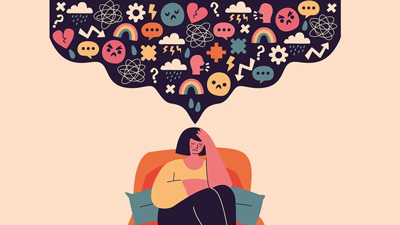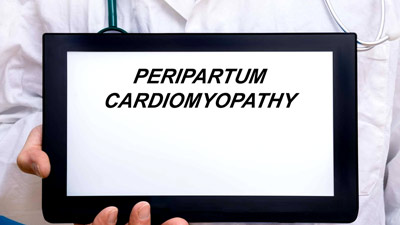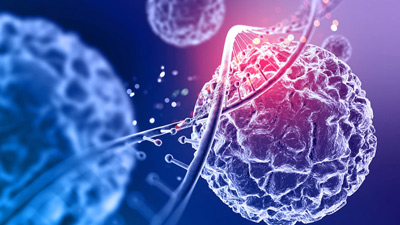Arthritis
What is Arthritis?
Arthritis is a common disease among the elderly and it is an inflammation of the joints. It can affect one or multiple joints in the body. It is a way of referring to joint pain or joint disease. According to Arthritis Foundation, it is the leading cause of disability among adults and about 54 million adults have arthritis in the world.
Types of Arthritis
There are more than 100 different types of arthritis and related conditions. It is important to determine the type of arthritis you have, here are some major types and their differences:
Osteoarthritis
Osteoarthritis is a joint disease that mostly affects the cartilage. Cartilage is the slippery tissue that covers the ends of bones in a joint. A healthy cartilage allows bones to glide over one another.
Osteoarthritis of the spinal vertebra is referred to as spondylosis, most commonly occurring in the neck region and lower back region. In osteoarthritis, the top layer of cartilage breaks down and wears away. When this happens, the bones under the cartilage begin to rub together causing pain, swelling, and loss of motion of the joint. Osteoarthritis can occur in any joint though it most often occurs at the hands, knees, hips or spine.
Rheumatoid Arthritis
A condition in which chronic inflammation affects the small joints in the hands and feet is known as rheumatoid arthritis. The condition has an effect on the lining of the joints leading to painful swelling that can result in bone erosion and joint deformity. It is an autoimmune disorder which occurs when the immune system affects the tissues of your own body. It causes joint problems and it affects other organs of the body like the skin, eyes, lungs and blood vessels.
Juvenile Arthritis
Juvenile arthritis is an autoimmune disease in which there is inflammation of the synovium in children under the age of 16. The tissue that lines that inside of joints is known as synovium.
Psoriatic Arthritis
Psoriatic arthritis is a form of arthritis that affects some people who have psoriasis. Psoriasis refers to a condition where red patches with silvery scales appear on the skin. Some of the symptoms of psoriatic arthritis are joint pain, swelling and stiffness. This condition can affect any part of your body including the fingertips and spine.
Gout
Gout is a common type of inflammatory arthritis that causes sudden, severe pain, swelling and tenderness. It can affect the joints in the body including the feet, ankles, knees, hands, wrists, elbows and sometimes, soft tissue and tendons. It most often affects the large joint of the big toe. Gout is more prevalent among men as they tend to have higher uric acid levels in their blood as compared with women.
Symptoms of Arthritis
There are many types of arthritis and there is a wide range of symptoms associated with each type of arthritis. Some of the common symptoms include joint stiffness, tiredness, a feeling of being unwell, weight loss, mild fevers and skin rashes.
Osteoarthritis
- Deep and aching pain
- Trouble doing day to day activities such as trouble dressing, combing hair, etc.
- Stiffness in the morning which lasts less than 30 minutes
- Stiffness after resting
- Pain when walking
Rheumatoid Arthritis
- Pain, stiffness and swelling in parts of your body
- Swollen joint – wrists, hands, or feet
- Morning stiffness
Juvenile Arthritis
- Joint stiffness
- Blurred vision
- Irritability
- Joint pain and swelling
- Rash
- Weight loss
- Persistent fever
- Eye pain or redness
Psoriatic Arthritis
- Swollen fingers and toes
- Dry, red skin patches with silvery-white scales
- Nails that separate from the bed
- Eye redness and pain
- Fatigue
- Small dents in your nails
- Spondylitis (back and neck pain)
Gout
- Stiffness in joints
- Sudden and severe joint pain in the morning or at night
- Tenderness in the joint
When to See a Doctor?
If the pain developed after unusual exercise or strenuous activities but that pain should ease within a few weeks. However, you should seek advice from a doctor if any of the following occurs:
- Fever
- Pain isn’t linked to an injury
- Joint has swollen
- Joint and muscle pain
- Back pain after lifting someone heavy and taking painkillers
- Swelling, stiffness or a painful ‘squeeze’ in your joints
Causes of Arthritis
Arthritis is a common disease of the elderly but the exact cause of arthritis is not known. Here are some causes of arthritis that you should be aware of:
Genetics: Genetics contribute to the development of arthritis is not well understood. Certain genetic variations increase the risk of the development of arthritis.
Previous Injury: After joint damage, the inflammation may persist or the injury and destruction may cause long-term pain and deformity.
Weight: The risk of joint damage and arthritis increases if you are overweight or obese.
Age: The risk of arthritis increases with age as the cartilage becomes more brittle with age and its capacity to repair and heal decreases.
Illness or infection: Several joint disorders such as joint infection and it increase the risk of damage to joint and development of arthritis.
Early diagnosis and appropriate treatment can prevent joint damage and disability.
Diagnosis of Arthritis
Treatment of Arthritis
The main objective of treatment is to lessen the amount of pain a person is experiencing and avoid additional damages to the joints. You need to follow a combination of things to achieve the best results; starting with medication.
Physical Therapy
The main treatment involves physical movement such as exercises to help strengthen the muscles of the affected areas.
Surgery
Sometimes, people also opt for replacing their joint with an artificial one. This mostly happens when a person has a hip or knee problem. Replacements are performed in the most severe cases.
Lifestyle Changes
Keep moving. The joints need to move as much as a person can move them. This will help the joints to function for a longer period of time. You can walk, do gardening and housecleaning are some of the simple activities you can instil in your daily life.
Exercise regularly. Regular exercise can help patients become more flexible and maintain healthy posture. These exercises also reduce the risk of joint injury.
Drink a lot of water. If a person finds it difficult to do these simple exercises, then one can use water to reduce the strain on their joints. Joints loosen in warm water and muscles become flexible. Even a heated pool can help.
Obesity. Being overweight or obese can put stress on the joints. To avoid this, shed those extra kilos to improve joint function.
Unlock the joints. Holding one position for a long time can lock the joints in the same place and add to the stiffness and discomfort. So, relax and stretch your joints as soon as possible.
Divide the Strain. Patients suffering from arthritis need to avoid activities that involve a tight grip or that put too much pressure on your fingers.
Alternative Therapies
Alternative therapies can be resorted to – if the herbs have been found to have anti-inflammatory properties. Here are some alternative therapies you can choose from:
Diet and Supplements
Switching from a diet rich in animal protein to a vegan diet can help alleviate the symptoms. Raw vegetable juice therapy resorts in severe cases
Acupuncture
Sticking needles all over the body may sound more pain-inducing than pain-relieving, but this old Chinese remedy is very popular among arthritic patients nowadays. It seeks to unblock stuck energies inside the boy, allowing for its smooth flow.
Massage and Heat Therapy
Regular massages relieve the pain of arthritic patients by helping the blood circulation and increasing its flow to painful parts. Massaging directly on swollen joints can do more harm than good, so it is of utmost importance to go for masseuses experienced with arthritic patients. Going to a sauna or having heat applied to the painful joints can also bring some relief.
Yoga
This centuries-old exercise is a must for people suffering from arthritis. There are asanas which can help to strengthen thigh muscles, thus increasing one’s range of motion and reducing pain. Only yoga instructors who are experienced in dealing with arthritic patients are recommended.
Related Articles
-
From Lyme Disease To Psoriasis: Expert Lists Diseases That Mimic Rheumatoid Arthritis
Rheumatoid arthritis is a chronic inflammatory disorder affecting joints. However, there are many health conditions that mimic its symptoms.
-
Ankylosing Spondylitis: Here Are Some Current Treatment Options Available
In this article, expert explain regenerative therapies that aim to not only manage symptoms but potentially reverse the course of the disease.
-
World Physical Therapy Day 2023: Theme, Significance, And Importance
Physical therapy takes a holistic approach to healthcare, considering not only physical but also psychological and social well-being. Read ahead.
-
Understanding Long-term Effects of Infectious Arthritis: Effective Prevention And Management Tips
Infectious arthritis can have severe long-term effects, but with early diagnosis and proper management can minimise these effects. Read ahead.
-
Gout: Expert Explains This Severe And Sudden Pain In The Joints
Gout is a condition that can lead to intense pain. Read on to know about signs and prevention of gout.
-
Experiencing Joint Or Muscle Pain Months After COVID-19? Study Reveals The Hidden Link
Cases of Inflammatory Rheumatic Diseases are being highly reported as a consequence of acute COVID infection.
-
Juicing With Arthritis: Expert Lists The Dos And Don'ts You Should Follow
For individuals living with arthritis, juicing can offer potential benefits to help find relief. Read on to learn what measures you should follow.
-
Understanding Juvenile Arthritis: Expert Explains Its Symptoms In Children
Juvenile arthritis refers to a group of rheumatic diseases that affect children under 16. Scroll down to learn its types and symptoms.
-
Psoriatic Arthritis Is Prevalent In India, Here’s What You Should Know About This Condition
Psoriatic arthritis can affect anyone at any age. To stay updated, read this article for more information.
-
4 Symptoms Of Juvenile Arthritis To Watch Out For
If any of these symptoms persist for several weeks or interfere with a child's daily activities, it's essential to seek medical attention promptly.















